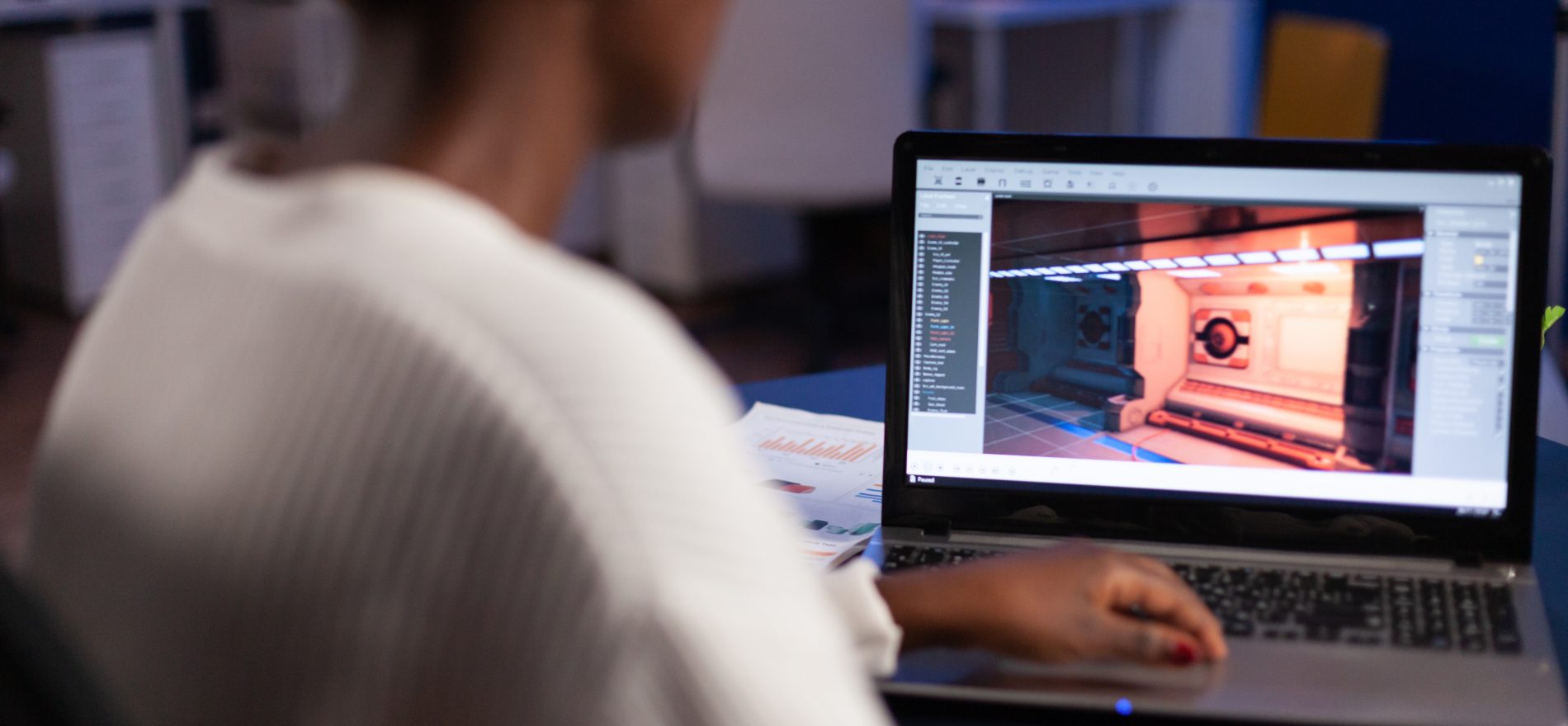The thought of compiling a thorough fashion design portfolio might appear to be an impossibility for many budding fashion designers. We want to demonstrate to you that creating a portfolio doesn’t have to be difficult, therefore we’ve put together an extensive compilation of some of the best fashion design portfolio examples.
It’s actually never been simpler to make a professional fashion design portfolio that lands you the employment of your dreams with the help of our expert fashion design portfolio templates. If you take inspiration from these fashion portfolio samples, we have a feeling you’ll be more than ready to begin creating.
Table of Contents
- What is Portfolio?
- What is Fashion Portfolio?
- Types of Fashion Design Portfolio
- How to Make Portfolio in Fashion Designing for a Job Interview?
- Fashion Portfolio Cover Page
- Fashion Portfolio Examples
- Simple Steps to Make a Great Fashion Portfolio
- Conclusion
- FAQs on How to Make a Fashion Design Portfolio
What is Portfolio?
An assortment of work, known as a portfolio, demonstrates a candidate’s abilities and understanding of a range of project work and practical studies. It is a visual expression of interests, inquiries into the world of work, experiments, designs, and finished products.
What is Fashion Portfolio?
The word “fashion portfolio” is well-known to all students studying fashion design. Every fashion designer must create an appealing portfolio to demonstrate his or her experience or inventiveness in this subject in order to land a job in the fashion business.
A portfolio can come in a number of sizes and styles and comprise specific presentations and statements of work that indicate performance, progress, and aspiration, thus there isn’t really a “one size fits all” strategy for establishing one.
The functions of a fashion portfolio are numerous. For every designer, fashion student, or creative person, a portfolio is a crucial visual self-promotion and sales tool. As a general rule, the portfolio should be a significant indicator of your creative prowess, strengths, and topic interests. There are some areas of good practice that we’ll take into consideration in connection to creating and editing a portfolio. Thus, it needs to showcase your strengths.
Types of Fashion Design Portfolio
Below mentioned are the types of fashion design portfolios:
- Admission Portfolio
- Professional Portfolio
1. Admission Portfolio
If you wish to apply for subsequent courses, master’s programs, or research after receiving your degree in fashion design, you must first create an entrance portfolio.
- Your entrance portfolio for the fashion design field should include a cover page, a drawing exam, a design test, a sewing test, and a written essay.
- Your design drawings and clothing photos should both demonstrate your creative knowledge. In the field of fashion design, originality, creativity, and aesthetic value are more important.
- Make careful to read and adhere to the standards before submitting your portfolio because each school or institution has a distinct set.
2. Professional Portfolio
Every fashion designer hopes to land a prestigious position in the fashion business after completing their study in the field. But in order to reach there, they need to have a professional portfolio in fashion design.
A portfolio is a crucial component of getting a job as a fashion designer. You must put up a portfolio that showcases your originality, talents, and abilities.
How to Make a Fashion Portfolio for a Job Interview?
Wondering how to make a fashion portfolio? This will help you understand things better.
You can demonstrate your adaptability in the portfolio. It is the ideal approach to display your aesthetically appealing work and experience-rich accomplishments. Include work that is pertinent to the interview and demonstrate your company research.
How do you build a solid portfolio for your work as a fashion designer? The following are some crucial advice and creating methods:
- The first step is to choose a topic and create an inspiration board around it.
- You are now creating a mood board with the aid of your inspiration topic. Before beginning, do some study on the newest colour trends, fashion trends, and your professional history in fashion.
- Include several relevant samples and organize them according to the collection, color, season, etc.
- Organize your projects such that related ones are grouped together, and arrange them in the following order: research materials (such as sketches or drawn sheets), best design development sheets, final range or collection, or product.
- The greatest design from your sketchbook will be chosen at this step, and you’ll create some illustrations with a fresh and original garment design. Include sketches in your portfolio of fashion work. To write down your ideas, you can use hand sketches or computer programs like Illustrator or CAD.
- Create your dress pattern now. Cutting patterns are crucial expertise, together with the capacity to assure accurate interpretation.
- Choose a cloth that fits your theme. Choose dress design mediums including applique, hand stitching, block printing, tie dye, and embroidery as well.
- You’ll start making your outfit for the picture shoot by a reputable model after you’ve decided on the media.
- Create a board in Illustrator and include images of the components, models, pieces, and accessories of dresses.
- Beginning of the professional photographer’s picture session. Avoid including any amateur photos or photo shoots in your fashion portfolio.
- Any size that works for the material can be used for a portfolio, such as A4 or A3. Here, editing the work and finishing the portfolio as a collection of project works or studies is the best course of action.
- Make a digital version of your fashion portfolio as well. Include a presentation CD with your portfolio as well.
- Add your sketchbook or a printed copy of your portfolio to the ring binder or album file where it belongs. The first page can include a remark about you personally. You might provide the interview panel copies of your CV along with it.
- Always include your portfolio and CV with your initial application when looking for a fashion job.
- Include any pictures of your final garment to illustrate your fashion design work. This can include lookbooks, designs that have been published online or in fashion publications, marketing materials, photos taken in a professional fashion setting, pictures of famous people wearing the design, etc.
How to make portfolio in fashion designing for a Job Interview?
Crafting a standout fashion portfolio is key to landing your dream job in fashion design is Qualifications for fashion designer how to create fashion portfolio should be the first question. Follow these steps to build a professional portfolio that showcases your creativity, skills, and unique style, tailored to impress at any job interview.
1. Start with a Brief Introduction
Introduce yourself with a concise overview of your background, design philosophy, and career goals. Highlight your unique style and expertise to set the tone for your portfolio. Keep it engaging to capture the interviewer’s interest immediately. Showing qualifications for fashion designer is easy gateway.
2. Incorporate Inspiring Mood Boards
Mood boards are your creative playground. Use them to visually communicate your inspirations through colors, fabrics, and imagery. They show employers how you brainstorm and develop concepts, making your design process crystal clear. Make them vibrant and reflective of your aesthetic and it also proves basic qualification for fashion designing are cleared.
3. Showcase Your Best Fashion Designs
Your portfolio’s heart is your design work. Curate your top pieces, using high-quality images to highlight your creativity and range. Arrange them thoughtfully, prioritizing designs that vibe with the brand you’re applying to. Let your talent steal the show.
4. Feature Detailed Technical Sketches
Technical sketches prove you’re more than just a dreamer—you’re a doer. Include detailed drawings showing construction, measurements, and fabric choices. These showcase your ability to turn ideas into wearable reality, a must for any basic qualification for fashion designing for designer.
5. Maintain a Concise Portfolio
Less is more. Keep your portfolio around 10 pages, featuring only your strongest work. A tight, focused selection ensures your best designs stand out without overwhelming the reviewer. Quality over quantity always wins in a portfolio.
6. Tailor to the Brand’s Aesthetic
One size doesn’t fit all. Customize your portfolio to match the employer’s vibe—fast-fashion or luxe. Highlight designs and inspirations that align with their market, showing you get their brand and can deliver what they need and how to make portfolio in fashion designing.
7. Create an Eye-Catching Cover Page
Your cover page is your portfolio’s first impression. Design it to reflect your personal brand with bold visuals and smart color choices. Clean typography and a striking layout set a professional tone for what’s inside. Make it unforgettable.
8. Prepare a Digital Portfolio
In today’s world, a digital portfolio is non-negotiable. Create a sleek PDF or website version for easy sharing. A well-organized digital format lets employers review your work anytime, boosting your accessibility and professionalism.
9. Skip Mannequin Photography
Ditch mannequin photos—they can look stiff and amateur. Instead, use high-quality shots of your designs on models or in styled shoots. These better showcases fit, movement, and appeal, making your work pop for potential employers.
10. Highlight Your Most Recent Work
Always feature your latest designs to show you’re evolving and relevant. Fresh work proves you’re active in the industry and up to speed with trends, making you a compelling candidate for any fashion role.
11. Take Your Portfolio with You
Never leave your portfolio behind after an interview. Keep it with you to protect your work and have it ready for future opportunities. It’s your creative lifeline—treat it like gold.
12. Add mood boards – Show your ideas and inspirations visually
Having a mood board to visualize the ideas is important as if we have some changes and recommendations, we can work on it prior before creating and changing it again. Now it should be clear how to create fashion portfolio and move up.
Fashion Portfolio Cover Page
A cover page is a standard feature of all portfolios, including fashion portfolios and academic and research portfolios. The cover page is always crucial to any portfolio or form of communication, as it has been said again. Remember that your fashion portfolio is equally as important as your report’s cover page, which is very important. For your fashion portfolio, you must understand how to create a polished fashion portfolio cover page.
The contents of a fashion portfolio should be apparent from the cover page. It suggests that you should search outside for fashion and style ideas. Nobody will appreciate your portfolio if they are not drawn in by the cover, thus it should be in a higher mark than what is within. Therefore, the cover should have the nicest design available.
Fashion Portfolio Examples
Mentioned below are some fashion portfolio examples which will help you understand and create your fashion design portfolio:
Tonica Pitman
Tonicia Pitman, the creator of TYPFFE, is a designer, a successful businesswoman, and a mother of two. When she founded TYPFFE, she went out to figure out what would distinguish her outfit apart from every other brand of clothing. As a consequence, stylish clothes that are appropriate for the typical working woman—whether she is a mother or a boss woman juggling several projects—are created. TYPFFE offers clothes that enable you to do business freely and comfortably while yet looking beautiful.
Gaia Lina
Dutch artist Gaia Lina resides in the southern region of Portugal. Studied fine arts at the Academy of Amsterdam and has many years of experience as a designer, artist, and educator. Specialized in felting shawls, gowns, jackets, vests, and other delicate and light garments. Design of home furnishings like pillows, lamps, and wall panels with the intention of bringing that lovely natural atmosphere indoors.
Cristobal Eolo
Cristobal Eolo, who was born in Guadalajara, Mexico, moved to the United States at a young age with his mother, where he began his career in fashion. Cristobal designs with the ideas of Femme Wear at the forefront of his thoughts. He is always captivated and motivated by the art, beauty, glitz, obscurity, and force of feminine energy. Regardless of gender, he aims to provide a final appearance that changes the body with feminine force.
FashionBoltonUni
With a focus on fashion design and commercialization, FashionBoltonUni incorporates sustainability and ethical design into a challenging curriculum. FashionBoltonUni, which works closely with businesses and the creative community, supports students’ growth as autonomous individuals prepared to pursue their chosen career paths.
Valerie Hawkins
For customers all across the world, Valerie Hawkins designs footwear lines. To create and construct successful collections, she has collaborated with several product developers, specialists, and manufacturers throughout the world over the years. She currently designs and develops shoes from her workshop in Somerset, UK, on a consulting basis, drawing on these experiences.
Simple Steps to Make a Great Fashion Portfolio
Keep updating → Update your portfolio regularly
Advantages of Fashion Designing is fast-changing, and your portfolio should reflect that. Regular updates show that you’re active and growing as a designer. Whether it’s a new sketch or an internship project, keep your content fresh. Careers in Fashion Designing after 12th are too many so, you can update your portfolio.
Review before publishing → Check everything before you share
Proofread all text, double-check image quality, and ensure your layout works on all devices. A clean, error-free portfolio shows attention to detail—an essential trait in fashion design.
Tell a story → Make your portfolio tell a story
Let your portfolio flow like a fashion collection. Each piece should build on the last. Show your design journey—from concept to execution—to captivate viewers and make your work memorable.
Start with your style → Show your unique style first
Start strong by highlighting your signature style. Whether it’s minimalistic, bold, or culturally inspired, showing your aesthetic early helps viewers connect with your identity as a fashion designer.
Make it all about your work → Focus on your best work
Less is more. Showcase only your best and most relevant designs. Employers want quality, not quantity. Each piece should reflect your skill, thought process, and design sensibility.
Show your skills → Highlight what you’re good at
Are you great at draping, digital illustration, or technical flats? Whatever your strength, highlight it clearly. Let your portfolio answer the question: “Why should someone hire or invest in me?” and how to make portfolio for fashion designer? This blog will help you out.
Conclusion
Put your efforts together and select your finest designs. Your strategy should be one of quality over quantity. Select your portfolio tools carefully and determine what would best help you achieve your objectives. Before you begin building your portfolio, always consider your goals and your target audience. Don’t forget to share it once you’ve finished!
FAQs on How to Make a Fashion Design Portfolio
1. What’s the ideal number of pages for a fashion portfolio?
A good fashion portfolio typically has 12 to 20 well-curated pages. Quality is more important than quantity. Focus on presenting your best work, design process, and final looks, rather than filling space.
2. How can students create a fashion portfolio?
Students can start by compiling their academic projects, sketches, and personal design experiments. Learn how to make a fashion portfolio by organizing content logically and using free online tools or templates to build a clean, professional layout. Fashion designer course eligibility varies from college to college.
3. How many designs should you include in a fashion portfolio?
Aim to include 4 to 6 complete design projects. Each should showcase the full process—from mood boards and research to final garments or illustrations. This helps reviewers see your thinking and development.
4. Is it possible to make a portfolio in one week?
Yes, you can build a fashion portfolio in one week if you already have your work ready. Focus on layout, storytelling, and visual clarity. Use digital tools to streamline the process and avoid overcomplicating the design.
5. How do I design a stylish portfolio cover that shows my work?
Your cover should reflect your aesthetic. Include your name, a striking image or artwork, and a clean title like “Fashion Design Portfolio.” Keep it minimal yet bold, and ensure it aligns with your overall portfolio theme.
























